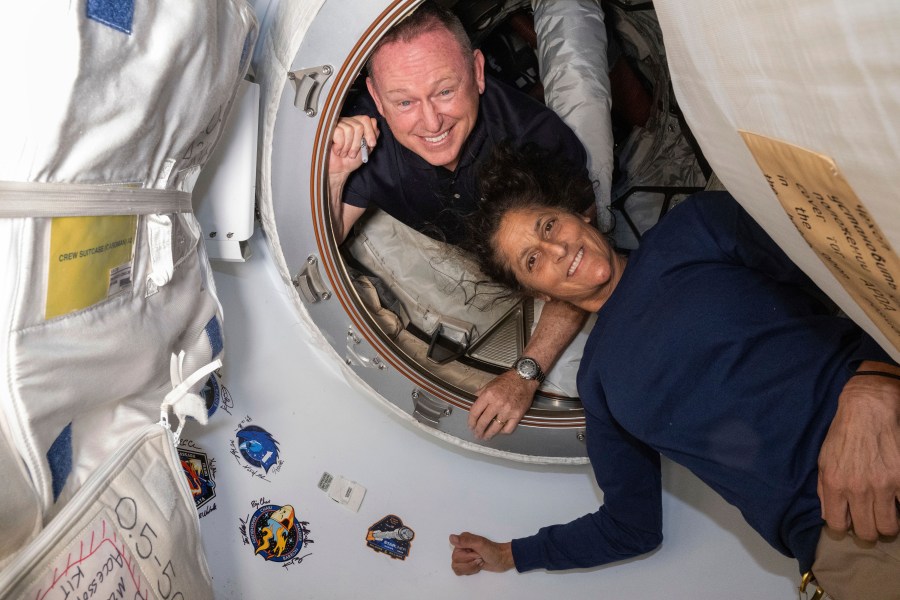SPACE (KXAN) — A two week journey into space could likely become an eight month stay aboard the International Space Station.
Astronauts Butch Willmore and Suni Williams became the first pilots for Boeing’s new Starliner capsule, but safety concerns have led NASA to delay a return trip.
The prolonged stay, while not deadly, could have a major impact on their bodies.
Astronauts have spent long stretches in space before. Last March, NASA astronaut Frank Rubio returned from space after 371 days, the single longest spaceflight by an American. His experience will give researchers a better understanding of the impact long term space travel has on the body.
We already know a lot about the impacts of space travel on health. NASA’s Human Research Program has studied what happens to the human body for more than fifty years.
So what can Wilmore and Williams expect when it comes to their extended stay?
Radiation in space
According to NASA, the risk for cancer, heart disease and cataracts increases with prolonged space flight. This is a result of radiation in space.
On Earth, our magnetic field protects from the Sun’s radiation. Spaceships, however, are not as protective as the Earth’s atmosphere.
NASA says that these increased health risks come from long term exposure. This will be especially important once we begin journeys to the moon and Mars within the next decade.
Bones and muscles get weaker
While no gravity in space is, let’s be honest, pretty cool, it comes with some downsides. Without the constant weight of the world on their shoulders, the astronauts bones and muscles get weak.
Bones lose density as a result of zero gravity. Minerals that are typically stored in your bones will also move to other parts of your body, according to Baylor College of Medicine. This increases calcium in an astronaut’s urine and increases the chance for kidney stones.

Muscles, with nothing to pull against, shrink. Astronauts experience decreased muscle mass, strength and endurance.
While there is exercise equipment aboard the ISS, it’s not enough to perfectly maintain an explorer’s muscle. Astronauts spend 2.5 hours per day working out to prevent this muscle loss, while also taking supplements to maintain bone health.
The good news is that back pain goes away. Astronauts aboard the ISS reported spines elongating, making people taller and relieving some pressure.
Space eyes
One unusual issue is poorer eye sight. Without gravity, eyes grow longer and vision changes.
This is called Space-Associate Neuro-ocular Syndrome (SANS). This is when blood collects in an astronauts head as a result of no gravity, resting in the back of the eye near the optic nerve.
This results in decreased sharpness and flattening of the eye ball, according to Texas A&M.
These changes typically occur after just two weeks in space.
Gravity and our hearts (and stomachs)
Our heart, like other muscles, shrinks while in space. Astronauts experience decreased blood volume, lung capacity and even experience more arrhythmias where the heart beats irregularly.
This is mainly an issue once an astronaut returns to Earth. Once under the effects of gravity, astronauts report a smaller and weaker heart.

Finally, constipation becomes a problem. Without the assistance of gravity, food has a hard time working its way through the body.
According to the Lunar and Planetary Institute, astronauts go on a special diet. Astronauts typically lose 5% of their body weight during a four-to-six month stay.
NASA encourages astronauts to eat even when they’re not hungry and to eat high calorie food. Food is taste-tested before the trip.
Vitamin D, folate and calcium supplements must be taken.
Iron is a whole other issue. It accumulates in the body because blood is just floating around and not pumping as hard. Because of this, astronauts need to be extra careful not to consume too much.
Return to Earth
The astronauts that arrived in space aboard Boeing’s Starliner may have to wait until February to return to Earth.

Space X is launching a mission in September, which was originally scheduled to carry four astronauts on board. NASA may ask two of those astronauts to stay behind so that Wilmore and Williams can take their seats on the return flight.
That flight is scheduled to return to Earth in February 2025.
